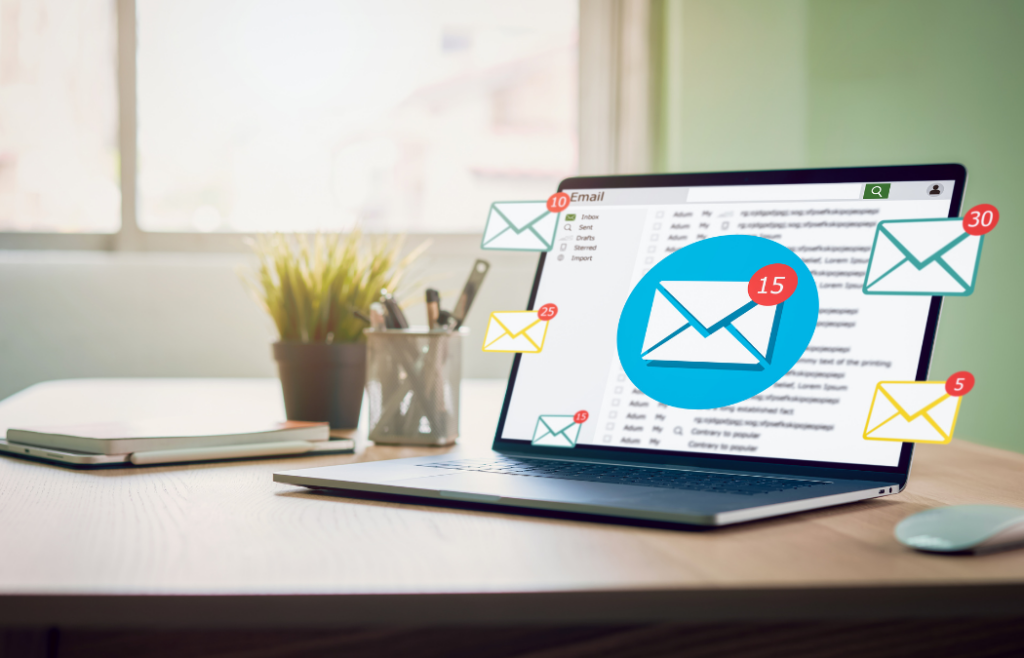In the digital marketing ecosystem, emails play a pivotal role. Not only do they bridge the communication gap between businesses and customers, but they also help foster long-lasting relationships. However, getting your emails opened and clicked is not always a walk in the park. Here are some tried-and-tested strategies to enhance your email open rates and clickability.
1. Refresh Your List
Are your subscribers still engaged? Consistency in emailing your subscribers is key to keeping a consistent list. However, even with regular emails, subscriber engagement can decline over time. Changes in email accounts or shifting interests can lead to disinterest in your brand. To maintain a vibrant subscriber base, consider periodically removing inactive subscribers. These could be individuals who haven’t engaged with any emails in the past 6 months.

Experiment with subject lines like “Is the love gone?” or “It Isn’t You, It’s Me” to prompt a response from inactive subscribers. Another effective method to keep your list fresh is inviting subscribers to update their information and preferences occasionally. Empowering them to control their engagement fosters a more personalized interaction. Reviving a dormant list? Consider running a survey. Offer a small incentive, like a $5 gift card, in exchange for their insights. This encourages engagement and provides valuable information for delivering tailored content they’ll appreciate.
2. Segment Your Audience
Relevance is the key factor when individuals decide to open an email.
To increase the relevance of your emails, consider segmenting your email list. It yields substantial benefits:
- 39% observed higher open rates
- 28% experienced reduced unsubscribe rates
- 24% reported improved deliverability and revenue.
You can start by tagging subscribers based on behavior, like purchase history. Tailor emails differently for paying customers than those who still need to purchase. You can even customize content based on specific products purchased. Demographics (like location) or interests can also guide your segmentation strategy. Understanding how subscribers join your list is crucial. For instance, if they downloaded an opt-in incentive on a specific topic, create a segment for them to receive more targeted content. These segments pave the way for personalized subject lines and messages, enhancing the chances of engagement with your email campaigns.
3. Avoid Spam Filters

While spam filters have evolved, they’re not foolproof. Even your finest emails might end up unseen in the dreaded spam folder. To ensure your email campaigns reach their audience, take measures to avoid the spam label:
- Ensure all recipients genuinely opted-in to receive your emails.
- Send campaigns from a reputable IP address untainted by past spam activities.
- Utilize verified domains for sending.
- Maintain clean code within your emails.
- Personalize the “To:” field using merge tags.
- Guide subscribers on whitelisting your emails and adding your address to their address book.
- Refrain from overly salesy language that triggers spam filters (words like “buy,” “clearance,” “discount,” or “cash”).
- Avoid deceptive subject lines that mislead recipients. Include your location in emails.
- Offer an easy opt-out method for subscribers.
4. Optimize Email Design & Layout
Visual appeal significantly impacts engagement. Mobile-responsive, aesthetically pleasing designs with clear CTAs (Call-to-Actions) and concise, scannable content enhance user experience. Utilizing whitespace effectively, balancing images with text, and employing responsive design principles ensures seamless readability across devices, encouraging clicks and boosting overall engagement metrics.
5. Add Compelling Content & Value Proposition
Delivering valuable, informative, and engaging content is paramount. Emails must offer something of worth, whether exclusive offers, educational resources, or entertaining stories. Focusing on solving audience pain points or addressing their needs establishes credibility and trust, compelling recipients to open emails and engage with the content.
6. Timing & Frequency Optimization
Strategically timing email deployments can significantly impact open rates. Analyzing recipient behavior and leveraging data insights to send emails at optimal times increases the likelihood of engagement. Furthermore, striking a balance between frequency and relevance prevents email fatigue and avoids overwhelming subscribers, thereby nurturing a healthier engagement rate.
7. Effective Personalization

Personalization goes beyond addressing recipients by name. Tailoring content based on past interactions, purchase history, or browsing behavior creates a sense of individualized communication. Dynamic content, personalized recommendations, and targeted messaging resonate deeply, fostering stronger connections and higher engagement metrics.
8. Continuous Testing and Optimization
The email landscape is dynamic, requiring constant refinement and adaptation. A/B testing elements such as subject lines, CTAs, images, and content allow for data-driven decision-making. Regularly analyzing performance metrics and iterating on successful strategies ensures continuous improvement, maximizing email open rates and clickability.
In digital marketing, optimizing email engagement is an ongoing process that demands a nuanced understanding of audience preferences and behaviors. These seven strategies—crafting compelling subject lines, segmentation, optimized design, valuable content, timing, personalization, and continuous testing—can significantly elevate email open rates and click-throughs, leading to more successful and impactful marketing campaigns.


